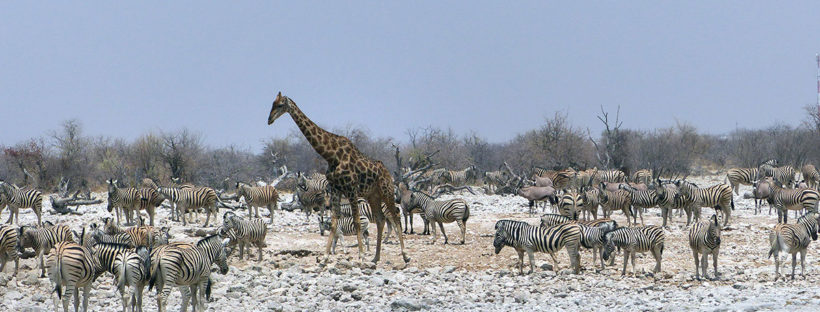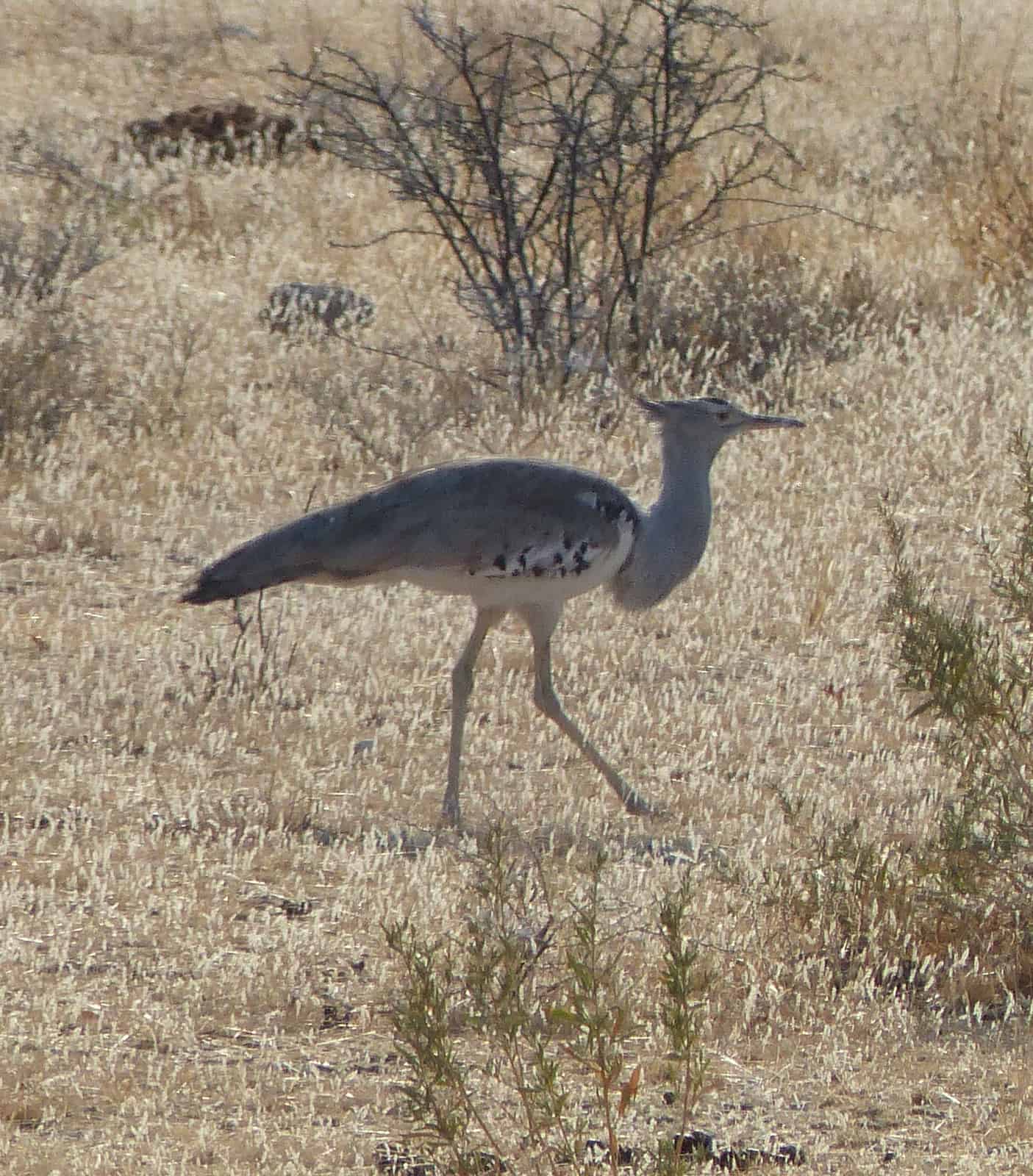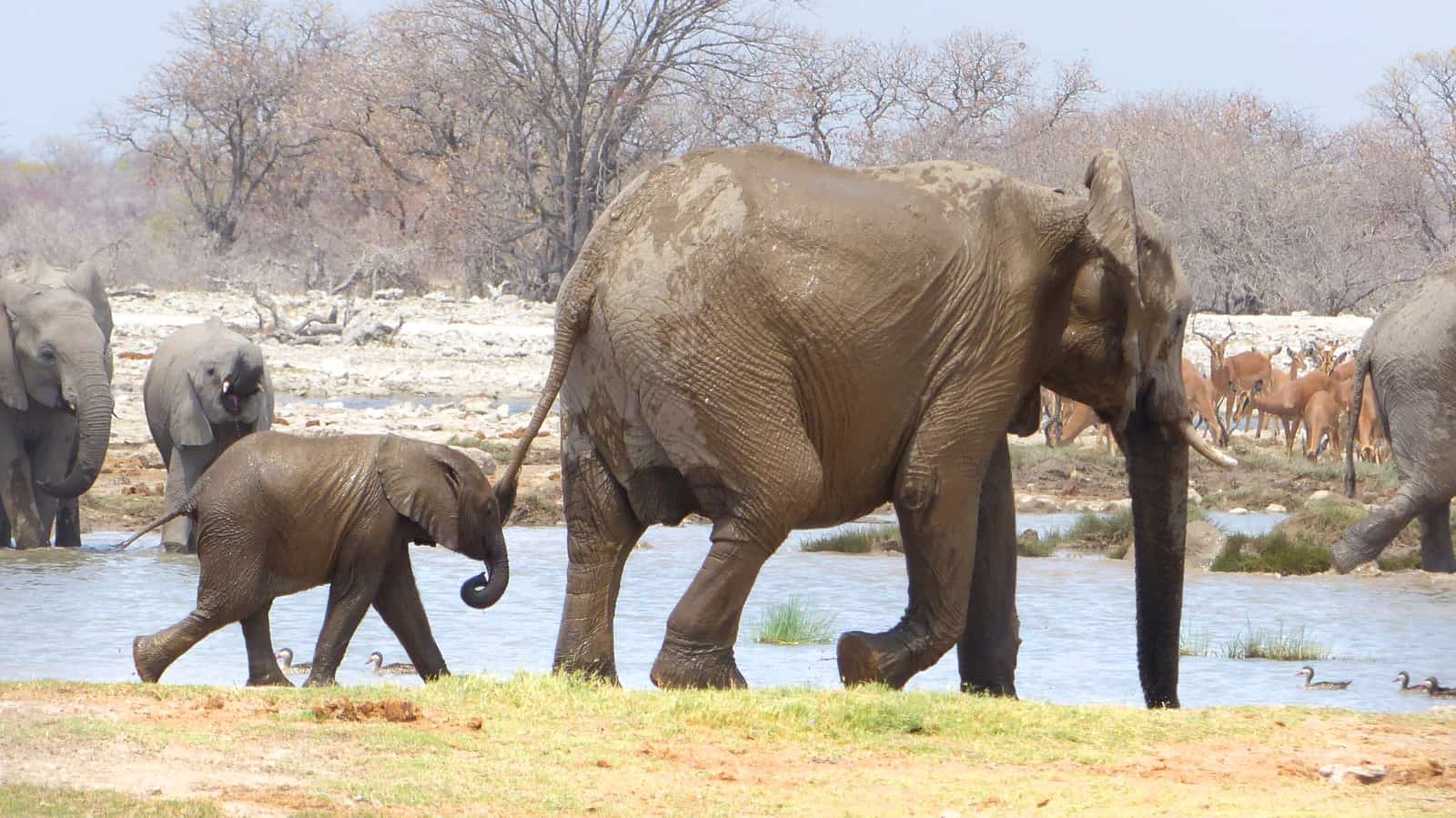We spent three of our days in Etosha, which is Namibia’s most famous national park. Here’s our extensive review of the park, including our ultimate list of animal sightings at more than 35 water holes!
General Advice for Etosha
- NEVER (!) get out of the car outside of the fenced campsites and picnic stops. There are too many predators around, and many of them are extremely well camouflaged.
- If you see a safari vehicle stopping, turning, and driving into the other direction with high speed, they’re probably driving towards a really cool animal.
- Lots of tourist cars on the side of the road = lion, leopard, or cheetah nearby.
- You can find a book with animal sightings at the office buildings of the campsites and the gates.
- Leopards and cheetahs are most difficult to spot.
Game Drive Safari in Etosha
Before we entered Etosha, we stayed a night at Toshari Lodge, which is located 40km South of the park entrance. The apartments and the main building with the bar, the pool, and the dinner hall are tastefully designed with African Chic. The barbeque dinner also perfectly catered to the taste of luxury tourism, with a wide meat selection to chose from and a really cool dance performance by the staff. Nonetheless, we felt a little bit more at home on the campsites than in the luxury environment of the lodge.
Our first activity in the morning was a half-day game drive organized by the Lodge. This is how a game drive in Etosha works: You sit in an open vehicle, either alone or with a larger group. You start early in the morning (for us at 7:00) and basically drive from water hole to water hole (while staying on the normal roads). Your friendly and knowledgeable guide explains a bit about the different animals, and is also in contact with the other safari guides to find out which animal is at which water hole. You spend lots of time at each of the water holes to ensure that really everyone in your group has taken enough photos of the animals.
Our conclusion is that we wouldn’t book a game drive in Etosha again. You can easily just drive from water hole to water hole on your own, and then you can set your own pace. You only need to know where to find which animals… but hey, if you’re actually planning to go to Etosha, today is your lucky day! We took notes of all the water holes; so if you follow our list, you’ll find all the animals you want to see.
Our guide to Etosha’s water holes
Life in Etosha is centered around the water holes. Especially near the end of the dry season in September and October, most animals stay close to the water holes. Elephants, zebras, lions, antelopes, giraffes… We were blown away by the number and variety of animals we encountered at the water holes. Here’s our ultimate list of animal sightings at Etosha’s waterholes:
Etosha Water Holes South-East of Okaukuejo
- Ombika Water Hole
- (Oct. 6, 2018, early morning): zebras, springboks, guinea fowls (safari guide: “The road runners of Africa”)
- (Oct 6, 2018, noon): zebras, giraffes, wildebeests, springboks
- Anderson Drive (Oct. 6, 2018, early morning): giraffes, zebras, springboks, ostriches, eagles
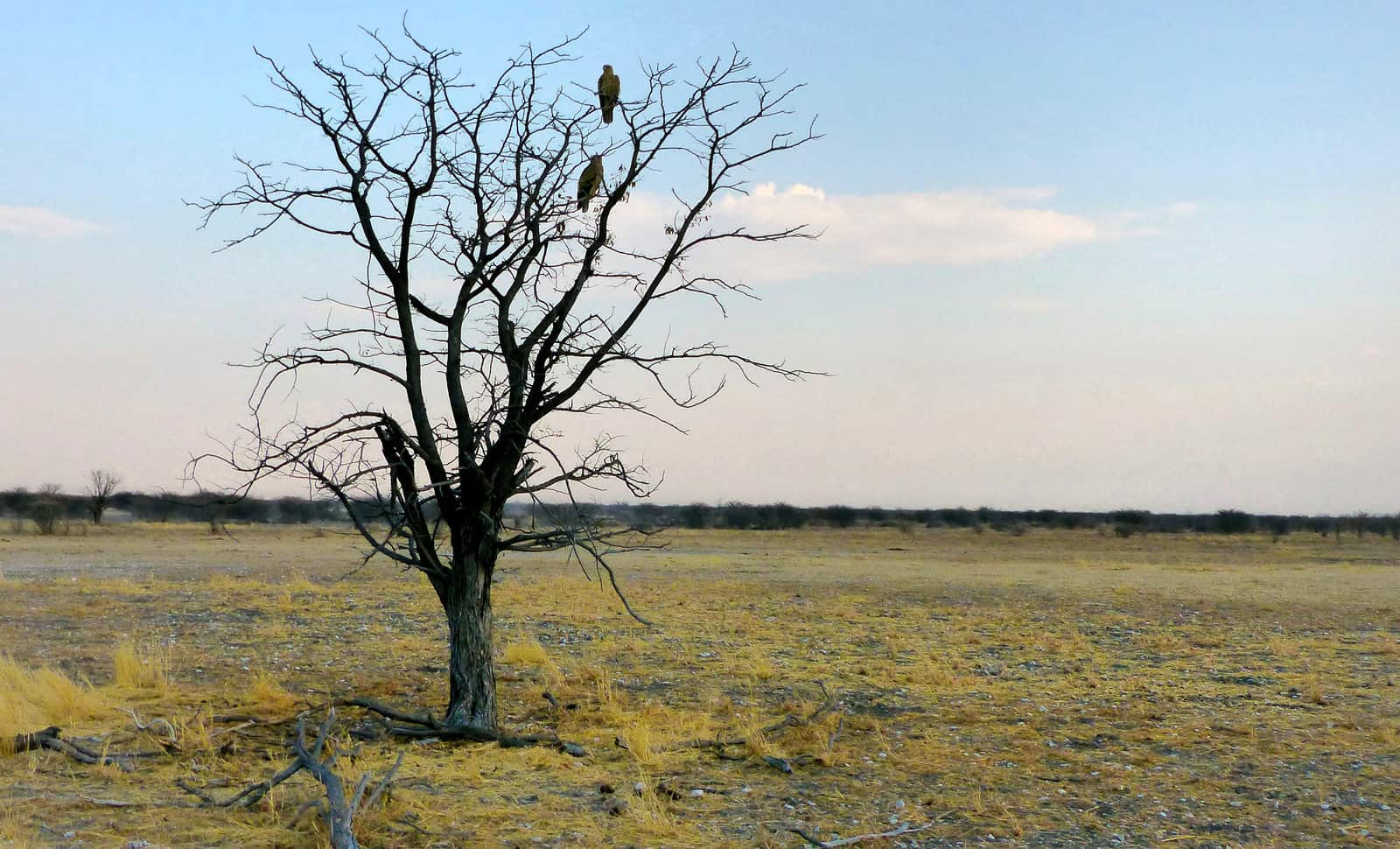
- Nebrowni Water Hole
- (Oct. 6, 2018, morning): single elephant, zebras, ostriches, oryx, springboks, giraffes
- (Oct 6. 2018, afternoon): single elephant, zebras, ostriches, oryx, springboks, jackal
- The lions that we saw at Gemsbokvlakte frequently show up at Nebrowni as well

- Gemsbokvlakte Water Hole (Oct. 6, 2018, morning): 4 lions eating a zebra, zebras, jackals, springboks, impalas, vultures. The lioness has three cubs that usually hide in the bushes.

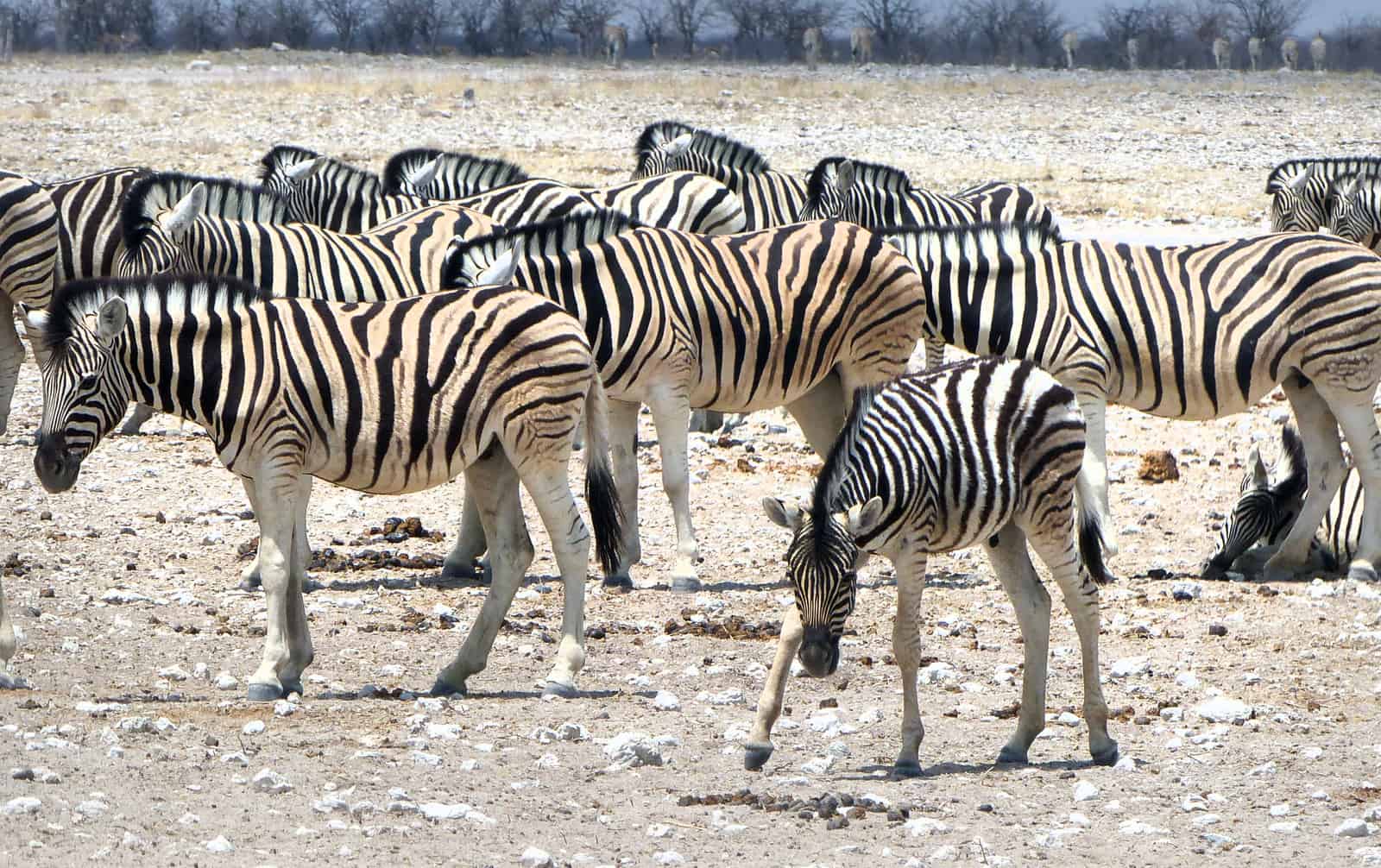
- Olifantsbad Water Hole (Oct. 6, 2018, morning): kudus, oryx, zebras, springboks, impalas, secretary bird. As the name suggests, this water hole is frequently used by elephants as well. There’s a picnic site with a functioning toilet near the water hole.

- Aus Water Hole (Oct 6., 2018, noon): orys, kudus, springboks, impalas. If you’re lucky, you can also see a leopard that lives in the bushes around the waterhole.

- Okaukuejo Water Hole (Oct. 6, 2018, noon): elephant, zebras, springboks. We also saw an elephant herd on the way to the waterhole in the morning.

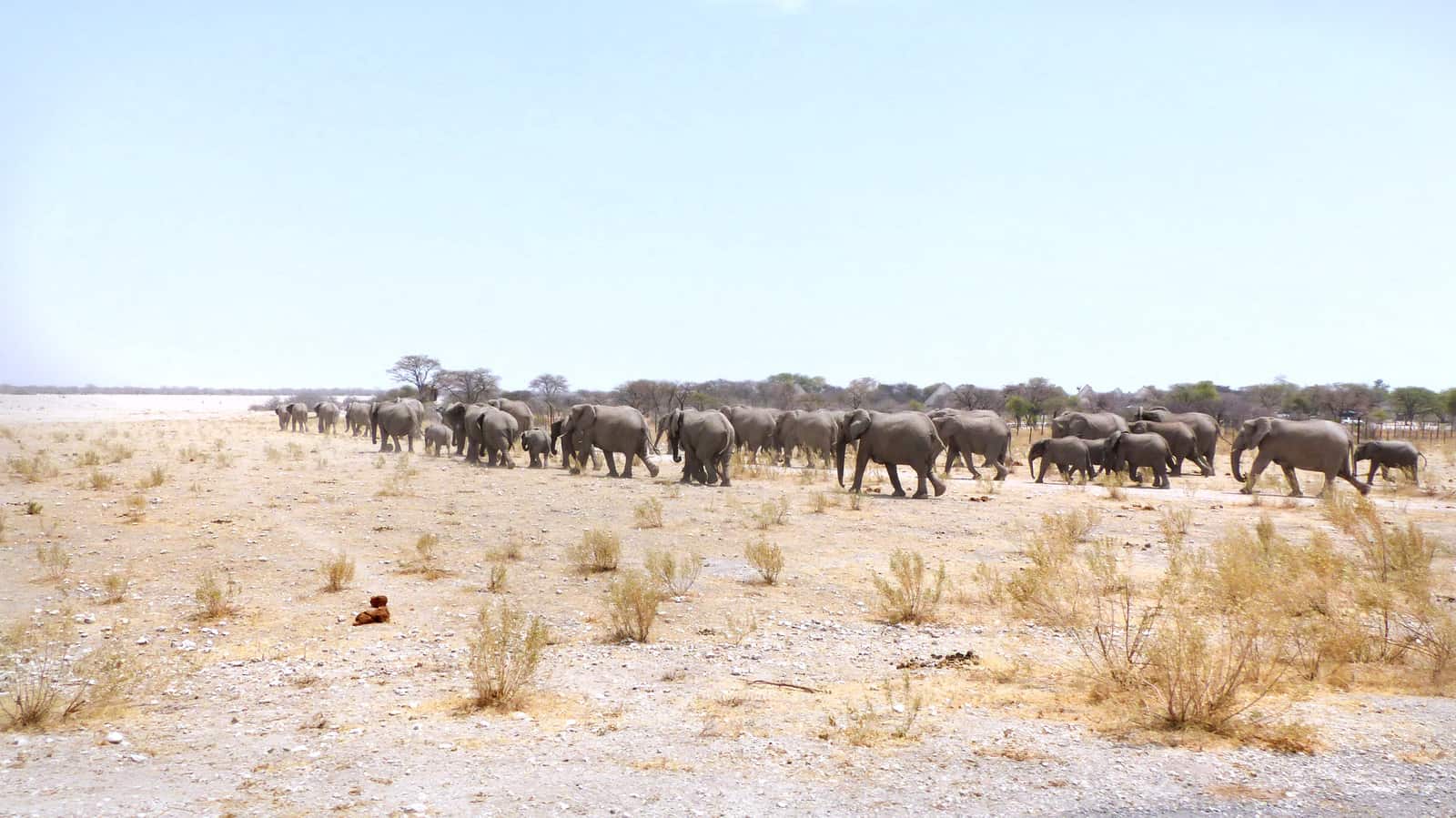
- Ondongab Water Hole (Oct. 6, 2018, afternoon): dried out
- Kapupuhedi Water Hole (Oct 6, 2018, afternoon): dried out, bustard
- Homob Water Hole (Oct 6, 2018, afternoon): no animals. Road (4km) is in bad condition.
- Gonob Water Hole: Can’t be reached from the road
Etosha Water Holes North of Okaukuejo
- Wolfsnes Water Hole (Oct. 6, 2018, noon): dried out, springboks
- Okondeka Water Hole (Oct. 6, 2018, noon): wildebeests, ostriches, vultures, springboks
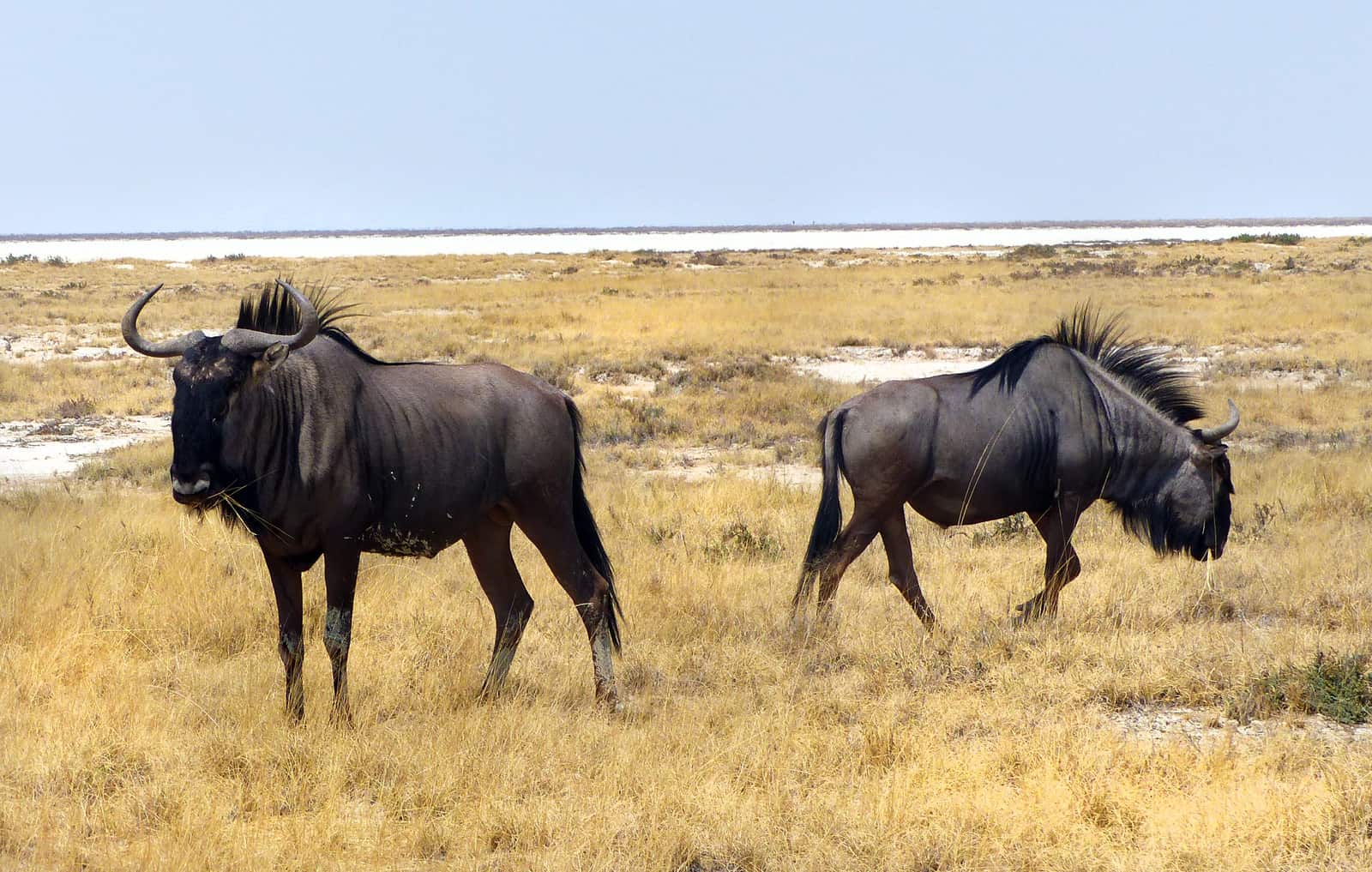
- Adamax Water Hole (Oct. 6, 2018, noon): dried out, springboks
- Natco Water Hole (Oct. 6, 2018, noon): dried out, springboks
- Leeubron Water Hole (Oct 6, 2018, noon): dried out
Water Holes in East Etosha
We didn’t visit East Etosha. Any comments about sightings warmly welcomed.
Etosha Water Holes around Halali Camp
- Sueda, Charitshaub, Salvadora Water Holes (Oct. 6, 2018, afternoon): 4 lions sleeping under a tree at Charitshaub, another large male lion drinking from the waterhole. Road in terrible condition, but more than worth it. Large elephant herd on the way to the waterhole. Lots of game in the area around the three waterholes (wildebeests, zebras, springboks, ostriches).
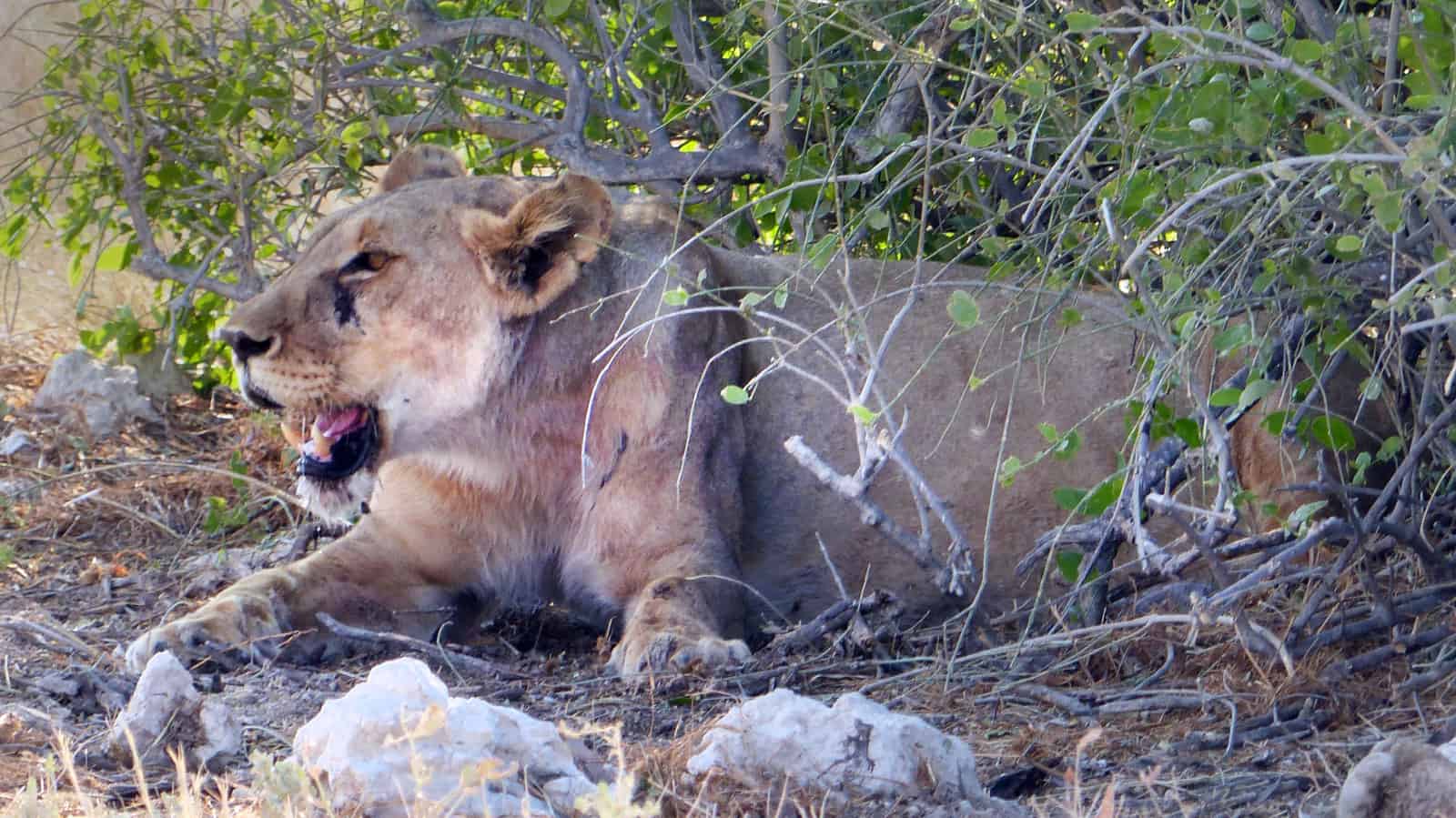



- Rietfontein Water Hole (Oct 6, 2018, late afternoon): kudus, giraffes, marabous
- Moringa Water Hole (Halali)
- (Oct. 6, 2018, late evening): elephant herd, giraffe, jackal, rabbit, owl. After the elephants left, 3 hyenas showed up.
- (Oct. 7, 2018, morning): zebras, impalas, kudus, guinea fowls
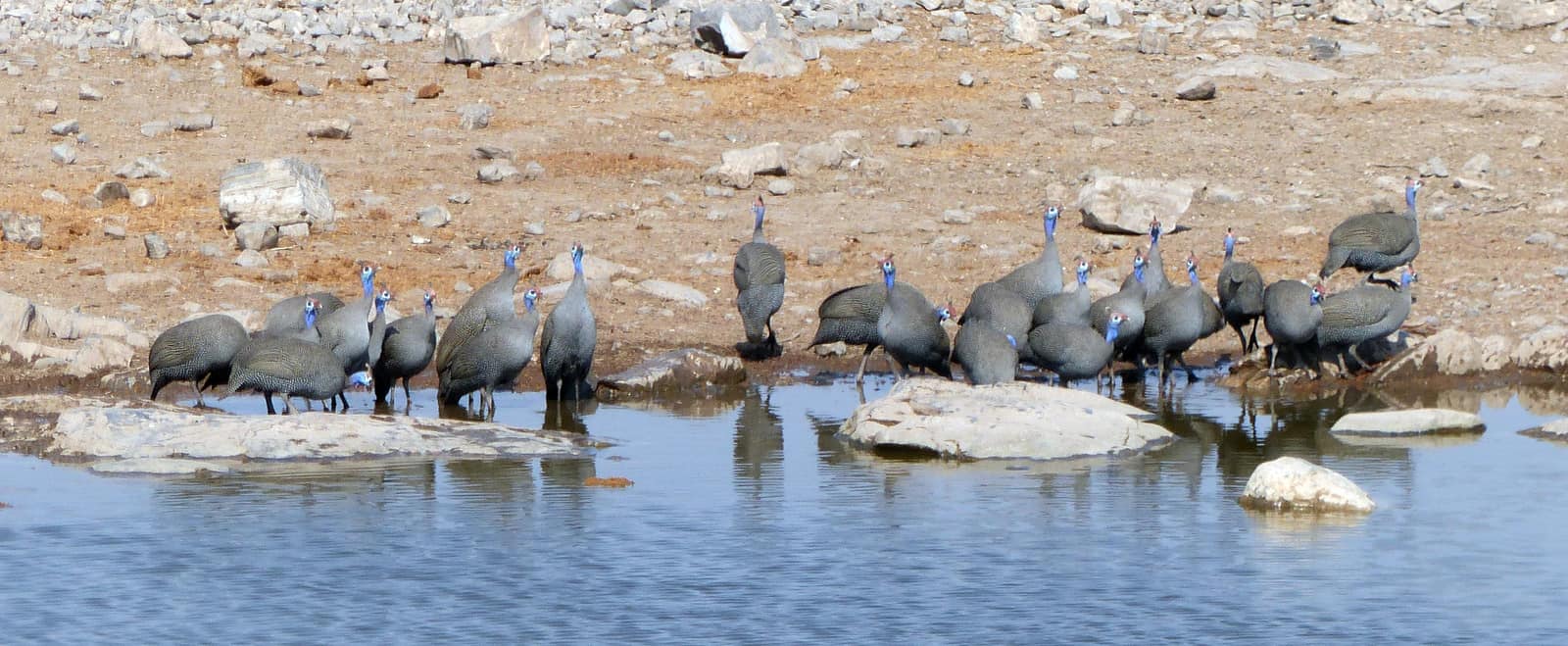
- Helio Water Hole (Oct. 7, morning): dried out
- Nuamses Water Hole (Oct. 7, morning): dried out
- Etosha Lookout (Oct 7., noon): wildebeest, ostriches. Great view of the Etosha Pan.
- Noniams Water Hole (Oct. 7, noon): zebra, impala.
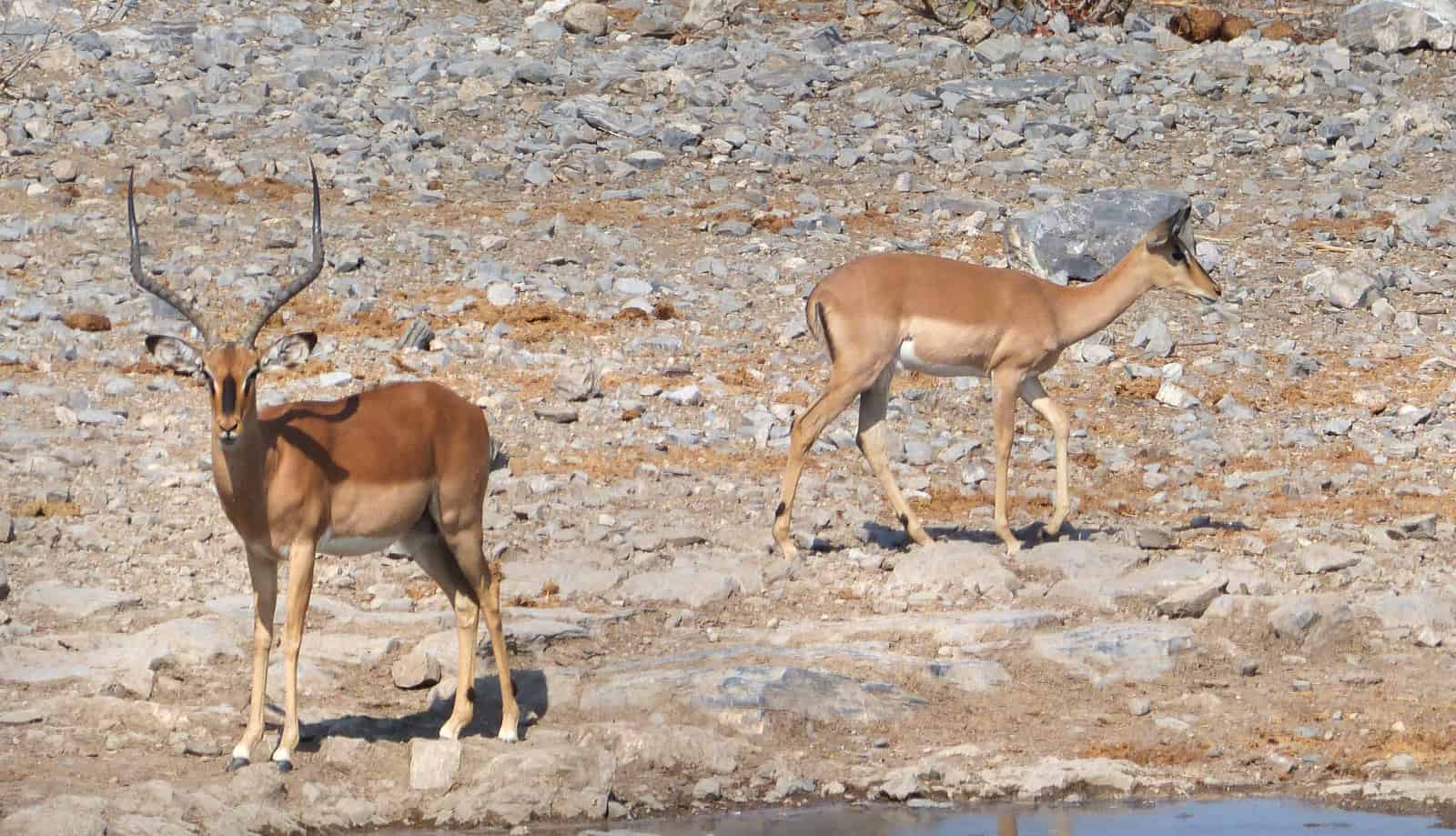
- Goas Water Hole (Oct. 7, noon): Wow, what a cool water hole! A leopard was sitting on a tree on the drive between the two ponds. On the water hole, we saw a large elephant herd, jackals, ducks, an eagle, and impalas.

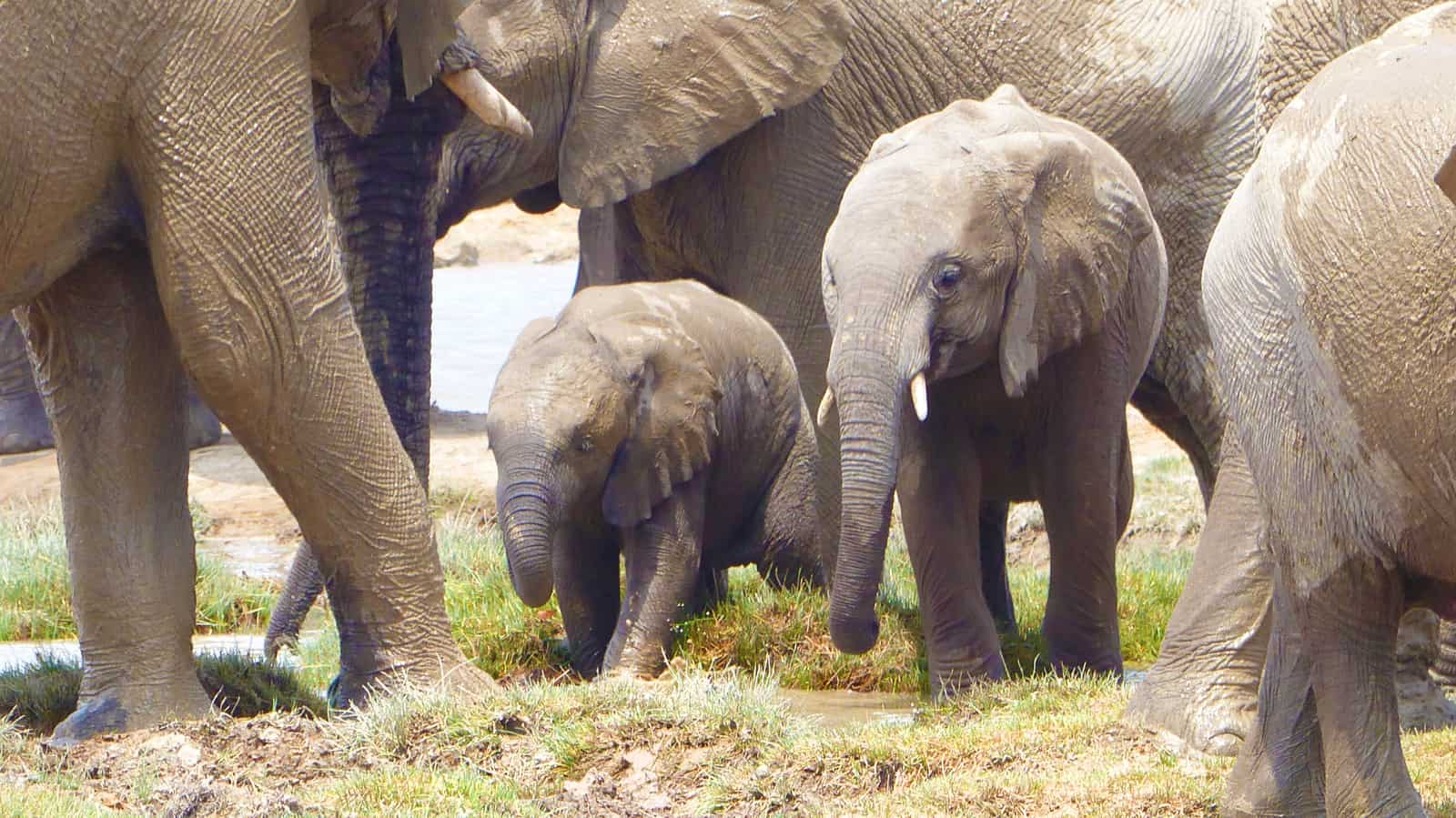

- Springbokfontein Water Hole (Oct. 7, afternoon): giraffe, single elephant, zebras, wildebeest, springbok, kudu, impalas, oryx.
The toilet near Springbokfontein is out of work because the fences were destroyed by elephants (i.e. it’s not safe to get out of the car). - Okerfontein Water Hole (Oct. 7, afternoon): Single elephant, ostriches. The toilet near Okerfontein is also out of work.
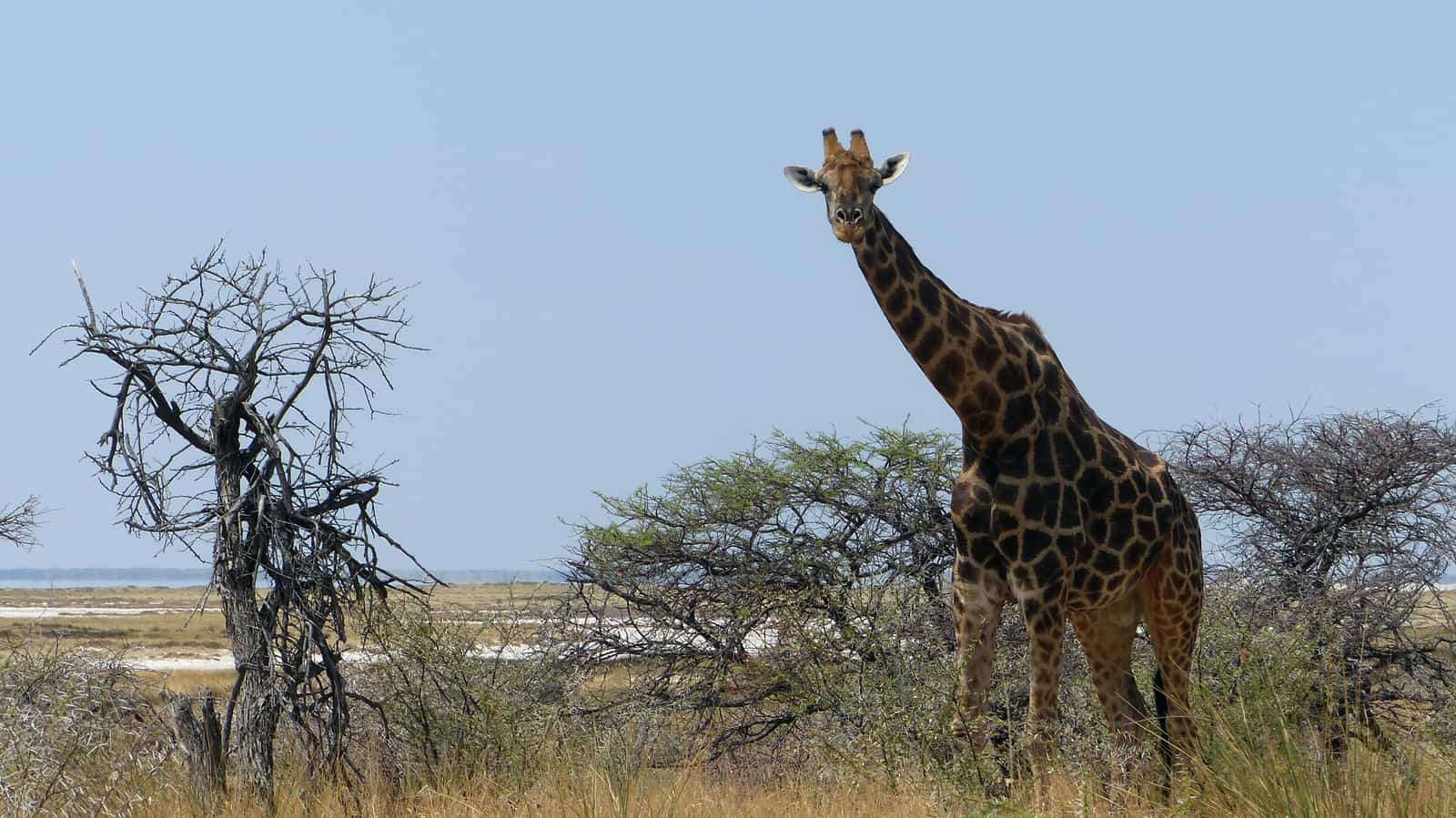
Etosha Water Holes near Namutomi Camp
- Kalkheuwel (Oct. 7, afternoon): Male lion, zebras, impalas

- Koinachas Water Hole (Oct 7., afternoon): Zebras, giraffe


- Chudob Water Hole (Oct. 7, late afternoon): zebras, kudus, oryx, springbok, impala
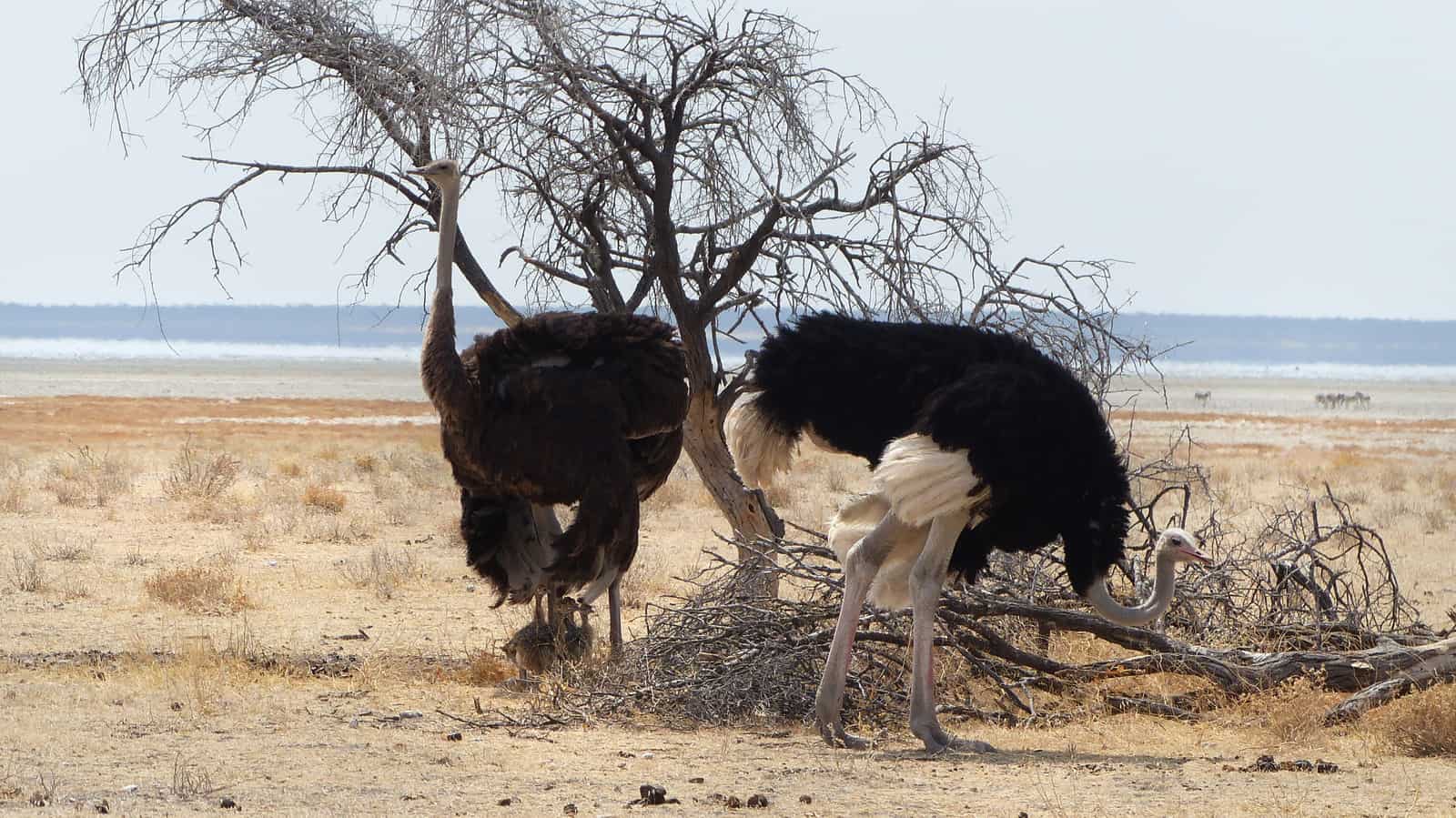
- King Nehale Water Hole (Namutoni)
- (Oct. 7, evening – 8:30PM): Elephant herd munching on the reed, bats
- (Oct 8, morning): No animals
- (Oct. 7, evening – 8:30PM): Elephant herd munching on the reed, bats
- Klein Namutoni Water Hole + Dik Dik Drive
- (Oct. 7, afternoon): Giraffes, zebra, springbok, oryx, impala, jackal
- (Oct 8, afternoon): Leopard, giraffes, zebra, springbok, vultures, marabou, jackal
- The leopard can frequently be observed at the waterhole. It usually sits in a tree approx. 100-200m into the Dik Dik drive. Just watch out for a large crowd of cars… 😉

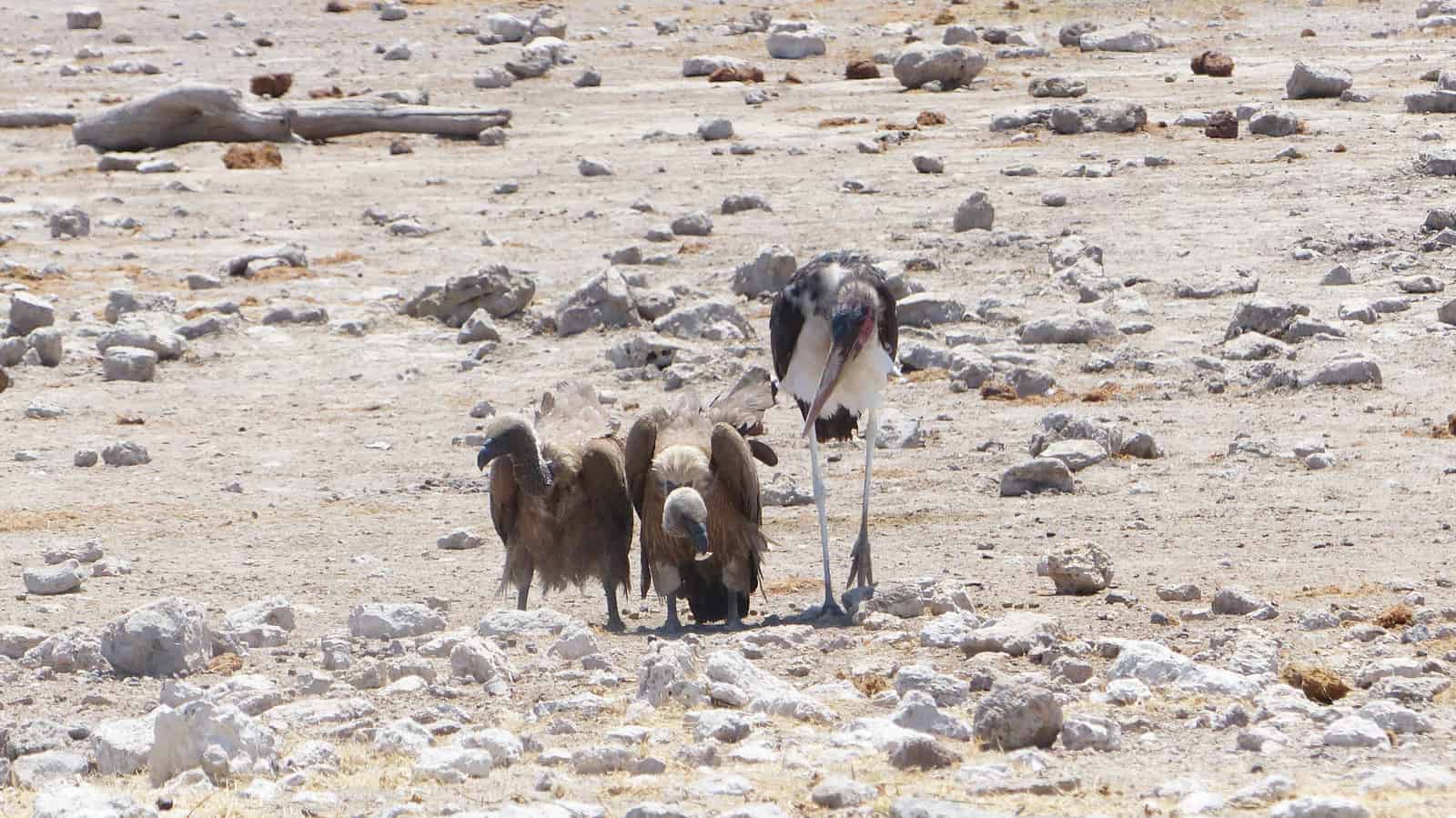
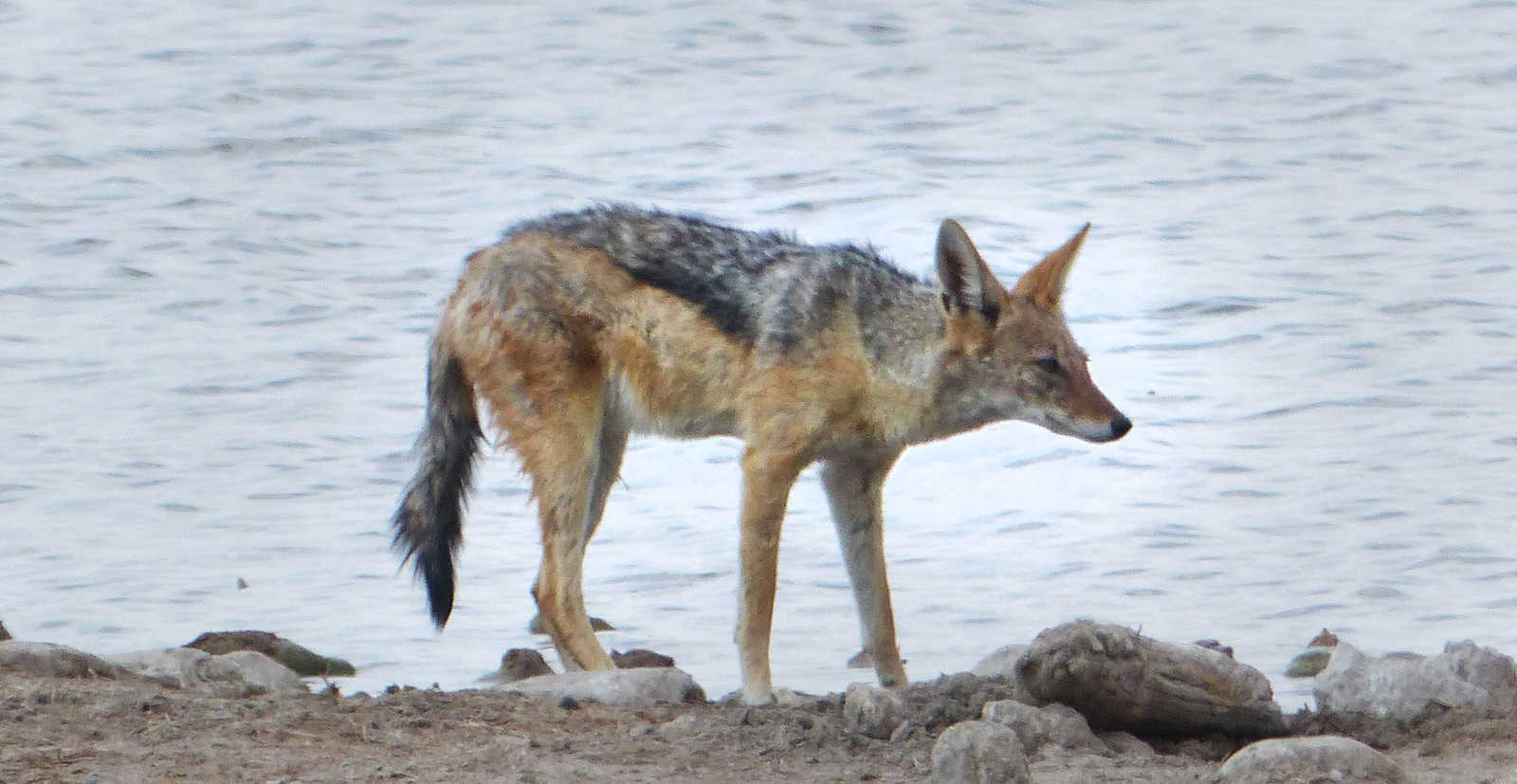
- Klein Okevi Water Hole
- Oct. 7, late afternoon: Pale chanting goshawk
- Oct. 8, morning: No animals
- You can often see cheetahs in the area between Namutoni and Klein Okevi

- Groot Okevi Water Hole
- Oct. 7, late afternoon: springboks
- Oct. 8, morning: warthogs, guinea fowls

- Pan’s Edge Drive (Oct. 8, morning): Giraffes, snake, warthog, springboks, impalas, oryx, ostriches. Possibly good for cheetahs as well.
- Tsumcor (Oct. 7, late afternoon): Giraffes, zebras
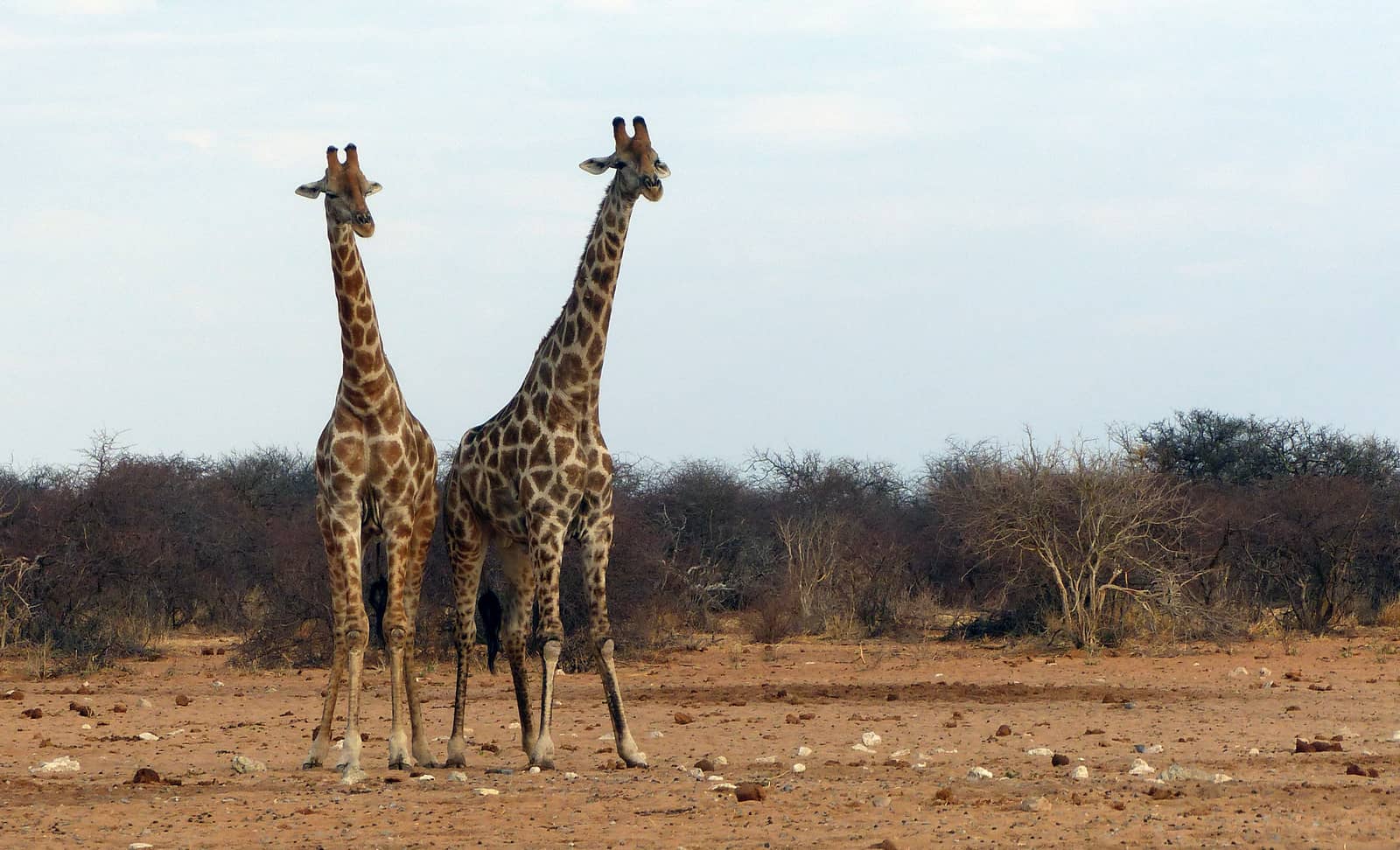
- Aroe Water Hole (Oct. 8, noon): dried out
- Twee Palms Water Hole (Oct. 8, noon): springbok. Other tourists have spotted a leopard here before.
- Fischer’s Pan Drive (Oct. 8, noon): Lions, 4 cheetahs!, giraffes, kudu, impala, ostriches, wildebeest, zebra, springboks
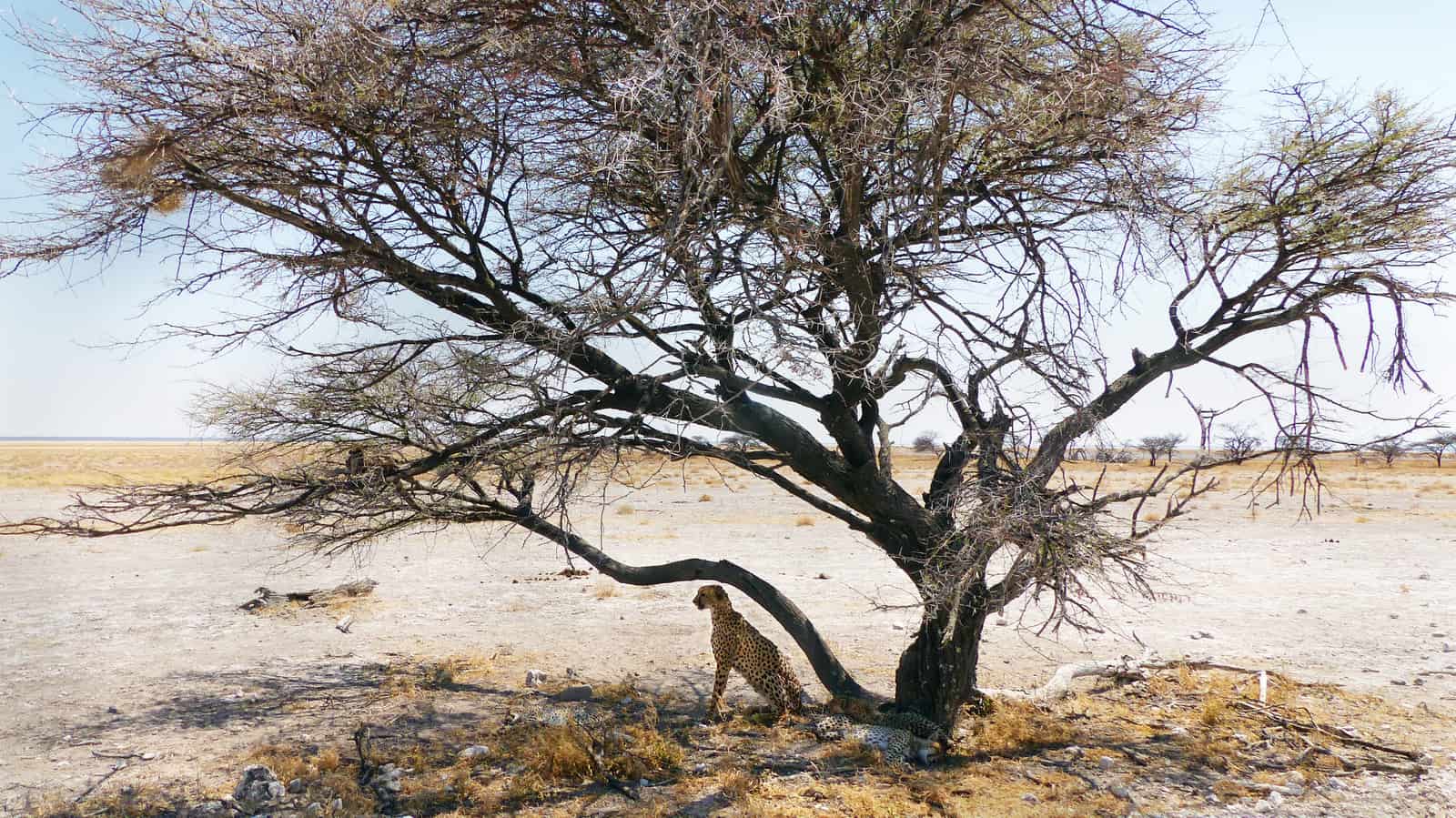
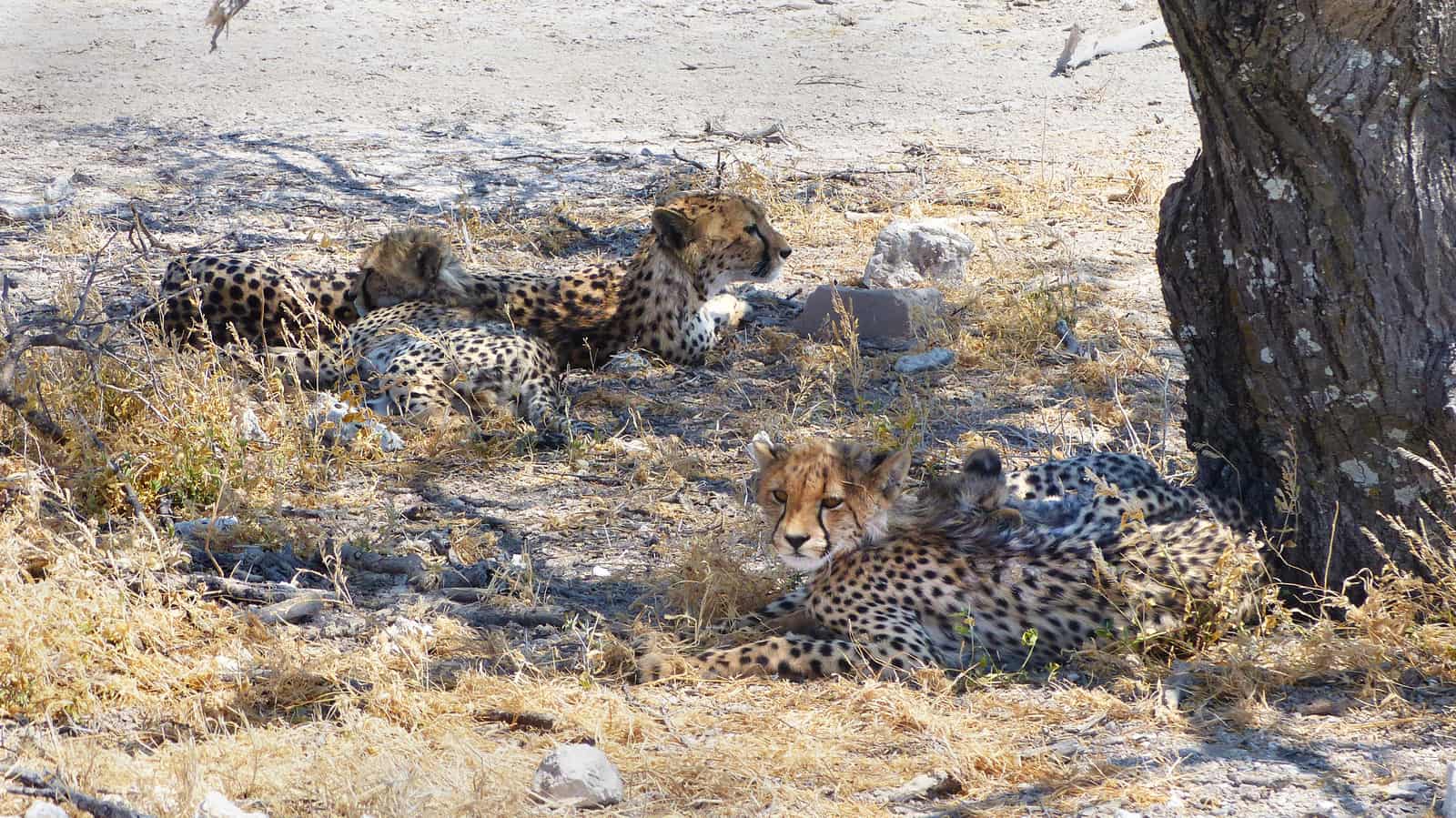
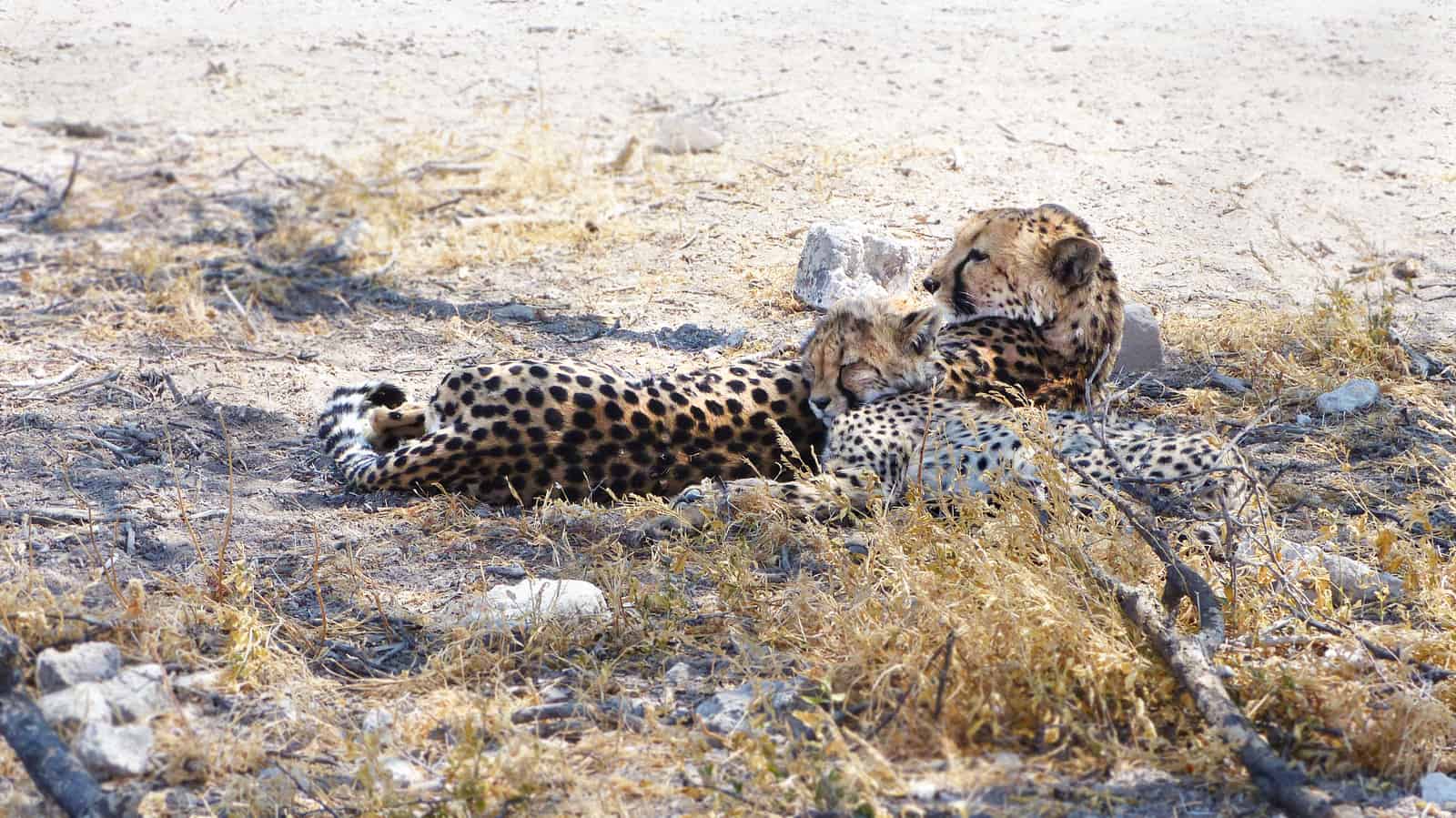
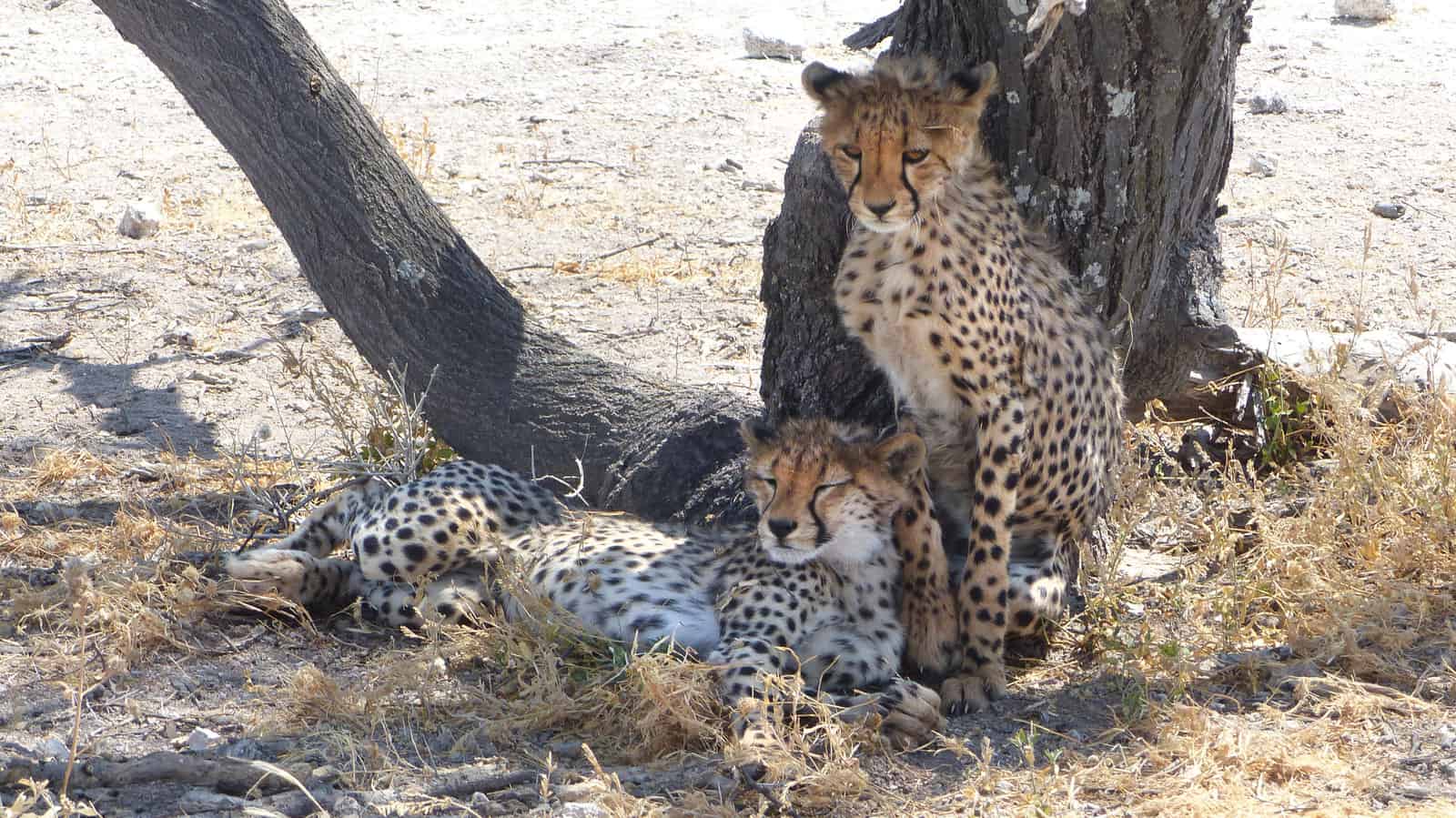
Rhinos in Etosha National Park
You might have noticed that we didn’t report any rhino sightings. In fact we saw rhinos at 5 different occasions, but the park asks everyone NOT to report rhino sightings. Even within the well-guarded perimeters of the park, rhinos are a main target for poachers. So please don’t help the poachers: If you post a rhino photo online, don’t specify where exactly you saw it.
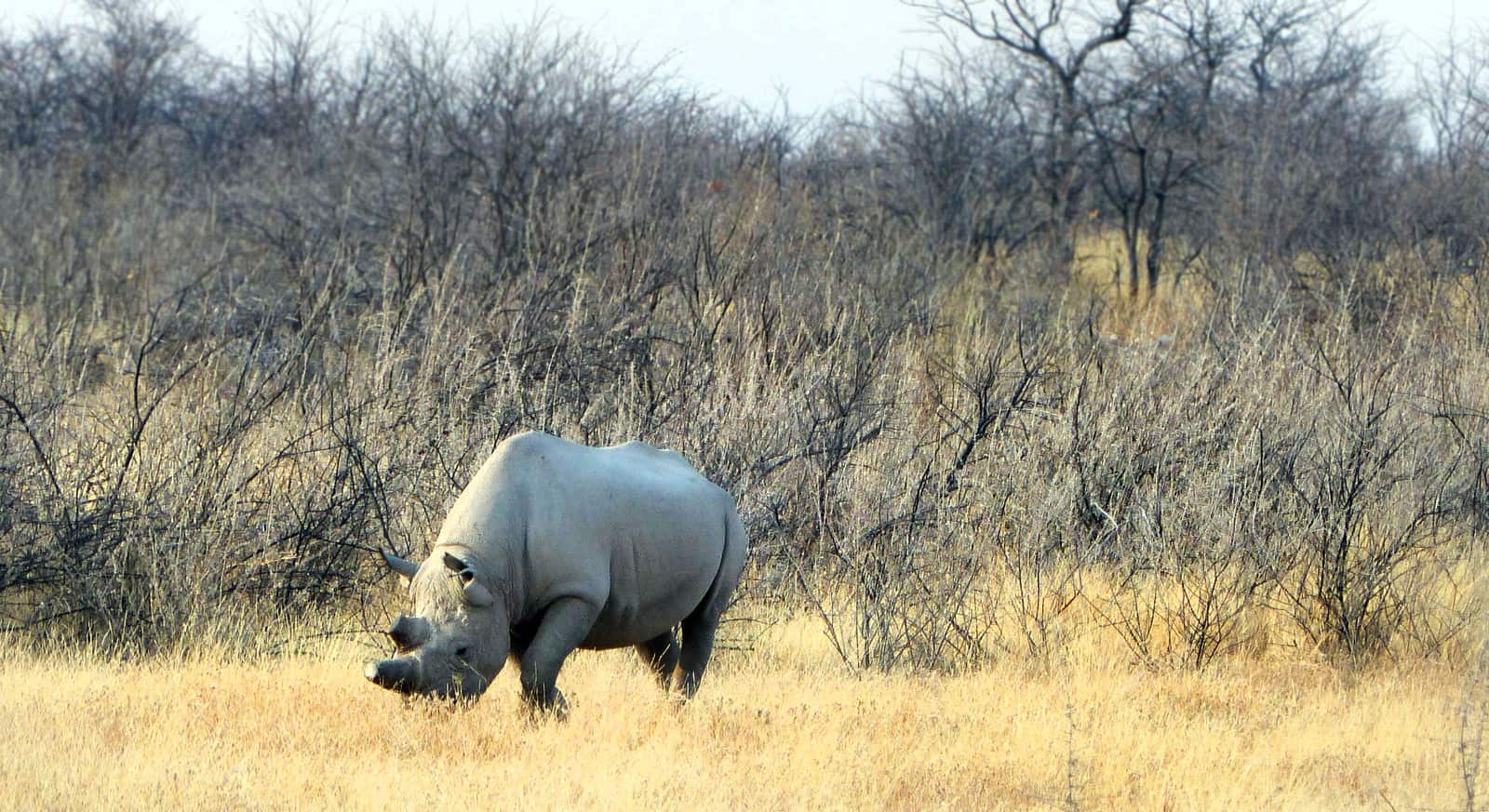
You can read more about Etosha’s anti poaching measures here: Scorpion Hill Puts A Sting in Etosha’s Poaching Pandemic.
If you want to support rhino conservation and anti poaching in Namibia, Save the Rhino Trust Namibia is grateful for your donation. SRT has been working to save Namibia’s rhinos since 1982, and will use your donation to fund field patrols, research, and education for local communities to acknowledge the unique value of the Namibian rhinos.
Camping in Etosha National Park
There are several campsites in Etosha. Both Dolomite Resort and Olifantsrus in Western Etosha were booked out already 3 months before we went to Namibia. Okaukuejo, Halali, and Namutoni are the most frequented campsites, and each have their “own” waterhole that can be visited by foot from the campsite compound. We stayed at Halali and Namutoni. We strongly recommend booking the campsites early in advance.
Halali Camp is located in the center of the Etosha National Park. We found it to be a nice, relatively large campsite. Lots of squirrels run around on the camp ground and fight for the breadcrumbs of the visitors. The campsite has a nice pool and you can buy wi-fi vouchers at the reception.
The waterhole is spectacular. In the evening, we watched an elephant herd drink. It’s awesome to see how well they take care of their young ones – there are always other elephants close-by that clearly take turns to watch the young ones. After the elephants left, a group of hyenas came to drink; and after the hyenas left, a poor giraffe that had been waiting for more than 30 minutes finally got to drink as well.
Namutoni was once a fortified army station of the German Schutztruppe. On the campsite’s premises, you can still see “Fort Namutoni” and a history museum that educates about the park and the history of the fort.
Namutoni campsite is a little bit smaller than Halali. Instead of squirrels, it has a large population of banded mongoose (mungo) that are really entertaining to watch.

OUR TRAVEL ROUTE FOR THE ENTIRE TRIP
Etosha was clearly our favorite station in 2.5 weeks of Namibia. If you want to learn what else we experienced in Namibia, check out our travel route for the entire trip – including reviews of the most exciting places!
- Last Stop: Brandberg / Twyfelfontein
- Next Stop: Waterberg
- Overview: Our entire route
If you also spotted some cool animals in Etosha, feel free to post them in the comment section! Please don’t post any rhino sightings, though. I’ll try to keep the list updated.
